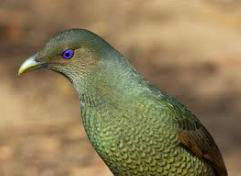There’s a lot to think about when you think about birds. They’re always there. Mammals, you only see at night, reptiles you only see in summer. Frogs – you have you go to where it’s damp and fish are always under water. But birds – they’re everywhere.
Humans have a big impact on birds. Some we help, some we hinder. There’re more Wedge-tailed eagles alive now than ever before, courtesy of the increase in food availability from the introduction of rabbits and from road-kill. Indian mynahs are now part of the Australian urban landscape, Crested pigeons are now across Melbourne’s suburbs and our rubbish tips have seen seagulls become landgulls.
On the other side of the ledger, we’ve driven the Paradise parrot to extinction, it’s a very long time since anyone saw a live Night parrot (the last two found were dead – and headless, but that’s probably not their natural state) and we’ve just about put paid to Orange-bellied parrots.
Some of our impacts are much more subtle however. Consider the Satin-bowerbird – a blue- black male in bright sunlight is a dazzling sight. The iridescence leaps off the bird as it cocks its head and fixes you with its violet eye.
Meanwhile, the female, in her scalloped green, olive and brown, sits off on the side and in turn fixes the male with her ever-present gaze.
She is looking to see which fellow has the flashiest ‘bachelor pad’, a sufficiently blue-bedecked bower where he fusses and prances, trying to entice her into a fleeting coupling. While we are rather ignorant of the criteria regarding ‘flashiest’, it seems that they include the most blue and perhaps the brightest blue.
What’s so special about blue that this should set a female heart a’flutter? Here’s what I think.
Blue is a rare commodity in the Australian bush, a few Dianella berries and not a lot else.

A male with a bower with piles of blue is a very good gatherer – industrious, far-ranging and possessed of a discerning eye. In the bird world, these are very handy attributes when considered within the context of finding food to provide for one’s offspring. A female who mates with the owner of a very blue bower clearly has good gathering qualities and is to be favoured in raising offspring with similar genetic traits.
Now comes the human impact.
We are a very slovenly lot out in the bush. We go hiking and camping in bower-bird country and drop litter in large and careless quantities. In that litter there are biro tops, plastic bread ties, drinking straws – all manner of blue detritus that male bowerbirds eagerly carry off to decorate their bowers. There is so much of this stuff that even the poorest forest gleaner can construct a flashy bower.
So look what we’ve done! We have made it possible for even the dud males with less than exemplary genetics to bedazzle and mate with however many females. What will this mean for the future well-being of bowerbirds?
It looks like we’d better stop littering or perhaps, in a post-plastic future, there might not be Satin bowerbirds?
